#CleanTech
Text
Discharged in large quantities by textile, cosmetic, ink, paper and other manufacturers, dyes carry high-toxicity and can bring potential carcinogens to wastewater. It’s a major concern for wastewater treatment—but researchers in Drexel University’s College of Engineering may have found a solution, using a tiny nanofilament.
58 notes
·
View notes
Text

View on Twitter
Researchers from MIT and China have developed a solar desalination device that could provide a family of four with all the drinking water it needs — and it can be made from just $4 worth of materials.
(Source)
30 notes
·
View notes
Text
King Coal will disappear... And King Solar will replace it
Solar photovotaïc (PV) is growing exponentially and will one day replace King Coal. A look at the numbers.
If you listen to mainstream media pundits, you may be missing it : a real energy revolution is taking place as renewables are ramping up and up and are on an exponential curve. King Coal is still the first source of electricity, but this will be very temporary as wealthy nations are ditching it as fast as they can to the benefit or wind and solar.These are good news for our climate and our common…

View On WordPress
5 notes
·
View notes
Text

Ecological Hydrogen Economy
The green hydrogen market is expected to reach $7,314 million by 2027, growing at a 61.0% CAGR. By 2027, the transportation industry is expected to have a USD 4,550 million value share in the green hydrogen market, having grown from its 58% value share in 2022 at a compound annual growth rate (CAGR) of 63.4%. According to projections, the electricity sector would expand from USD 88.5 million in 2022 to USD 1018 million by 2027 at the second-highest pace feasible, or 63.0%. The development of electrolysis technologies, the declining cost of creating renewable energy from all sources, the increasing demand from FCEVs and the power industry, among other factors, are anticipated to drive market expansion throughout the course of the forecast period.
In the worldwide green hydrogen market, wind-powered hydrogen holds the biggest market share. The global green hydrogen market was led by the end-use transportation sector.
Download- https://www.marketsandmarkets.com/pdfdownloadNew.asp?id=92444177
IMPACT OF GREEN HYDROGEN
Green hydrogen has the potential to make a significant impact on various sectors and industries, including:
Energy: Green hydrogen has the potential to decrease dependence on fossil fuels and raise the proportion of renewable energy sources in the energy mix. It can offer a dependable, steady energy supply that is portable across great distances.
Transportation: Transportation vehicles such as cars, buses, trains, and even airplanes can run on green hydrogen as fuel. It can improve energy security and aid in the reduction of greenhouse gas emissions and air pollution.
Industry: Green hydrogen can take the role of fossil fuels in a number of industrial processes, including the manufacturing of chemicals, steel, and refinement. It can enhance the sustainability of industrial processes and aid in the reduction of greenhouse gas emissions.
Agriculture: Fertilizers, which are necessary for contemporary agriculture, can be made from green hydrogen. It can enhance agricultural sustainability and lessen dependency on fertilizers derived from fossil fuels.
Climate change: Green hydrogen has the potential to significantly lessen the effects of climate change by cutting greenhouse gas emissions and raising the proportion of renewable energy in the energy mix.
However, there are also some challenges in green hydrogen economy associated with the adoption of green hydrogen, including:
Cost: Because of the low electrolysis efficiency and high cost of renewable energy sources, green hydrogen is now more expensive than hydrogen derived from fossil fuels.
Infrastructure: Infrastructure projects involving production sites, storage tanks, and transportation networks must be funded in large quantities if green hydrogen is to be widely used.
Scale: To fulfill the increasing demand, the production of green hydrogen must be scaled up, which will require considerable investments. Currently, the scale of green hydrogen production is quite limited.
Efficiency: Higher energy consumption and expenses are the outcome of the comparatively low efficiency of electrolysis, which is the process used to make green hydrogen.
Competition: The market potential of green hydrogen may be constrained by competition from other clean energy sources like renewable energy and battery storage.
Technological Developments in Green Hydrogen Production
Growing awareness of the potential of green hydrogen and the growing demand for clean energy are driving the rapid evolution of technological advancements in the production of green hydrogen. The following are a few recent technological advancements in the production of green hydrogen:
Electrolysis Technology: An efficient and economical way to produce green hydrogen is by electrolysis, which is becoming more and more popular due to technological developments in the field. The energy consumption and cost of electrolysis are being reduced by developments in electrolyzer materials and designs, as well as in system integration and control.
Renewable Energy Integration: The availability of renewable energy sources like solar and wind power is closely related to the creation of green hydrogen. The efficiency and dependability of renewable energy systems are rising due to recent technological developments in renewable energy integration, which in turn is improving the efficiency and economics of green hydrogen production.
Green Hydrogen Storage: One major obstacle for green hydrogen is cost-effective and efficient storage, however new developments in technology are making storage solutions more affordable and efficient. The capacity and adaptability of green hydrogen storage are growing because to new storage technologies including hydrogen carriers and subterranean hydrogen storage facilities.
Carbon Capture and Utilization: A crucial technology in the decarbonization of industries, carbon capture, utilization, and storage (CCUS) is being used more and more in the creation of green hydrogen. The production of green hydrogen is made even more environmentally beneficial by the use of CCUS technology, which enables the capture and storage of carbon dioxide emissions.
Green Hydrogen Infrastructure: A comparable infrastructure must be in place to facilitate the rise of green hydrogen. The creation of massive green hydrogen production facilities, the development of new pipeline networks, and the integration of green hydrogen into current energy systems are examples of recent technological advancements in green hydrogen infrastructure.
Leading players in Green Hydrogen Economy
Some of the leading players in the green hydrogen industry are:
Air Liquide: A French business that serves numerous sectors by offering industrial gases and other products. Offering solutions for hydrogen production and delivery, it has a major position in the green hydrogen industry.
Linde: An international provider of industrial gas services and products to a range of sectors. Linde is focused on building hydrogen infrastructure and has made investments in green hydrogen initiatives.
Siemens Energy: An organization based in Germany that offers energy solutions to different sectors. It is working on developing green hydrogen generation and storage technologies, among other hydrogen-related technologies.
ITM Power: A UK-based business that creates green hydrogen production systems and other integrated hydrogen energy solutions.
Nel Hydrogen: A Norwegian business that offers hydrogen production, delivery, and storage options. With its electrolysis method for hydrogen production, it has a major position in the green hydrogen business.
Plug Power: A US-based business that offers stationary power and transportation applications among its many hydrogen fuel cell uses. It works on creating green hydrogen solutions for several sectors of the economy.
Ballard Power Systems: A Canadian business that offers fuel cell systems for stationary power and mobility, among other uses. It works to lower the cost of hydrogen fuel cells and is engaged in the development of green hydrogen technology.
McPhy Energy: A French business that offers systems for the generation, distribution, and storage of hydrogen. It is attempting to lower the cost of producing hydrogen and is engaged in the development of green hydrogen technology.
Enapter: Based on anion exchange membrane technology, this German company offers solutions for hydrogen production. Green hydrogen solutions, including stationary power and mobility, are being developed by this organization.
Green Hydrogen Systems: A Danish business offering hydrogen generating technologies based on electrolysis. It is engaged in the creation of green hydrogen technologies and is attempting to bring down the price of producing hydrogen.
STRENGTHS AND LIMITATIONS OF GREEN HYDROGEN
Strengths of Green Hydrogen:
Renewable: Green hydrogen is a sustainable energy source that doesn't increase greenhouse gas emissions because it is made using renewable energy sources like solar, wind, or hydropower.
Versatile: Green hydrogen is a multipurpose energy source that can be utilized as fuel for industry, transportation, and heating.
Energy Storage: Managing the erratic nature of renewable energy sources like solar and wind power requires the usage of energy storage solutions, such as hydrogen.
High Energy Density: Green hydrogen has a lot of energy per unit of weight or volume, making it have a high energy density.
Clean: Hydrogen is a clean and environmentally friendly energy source because its only byproduct is water.
Limitations of Green Hydrogen:
Cost: Green hydrogen production is now less economically viable due to its high cost when compared to traditional fossil fuel-based energy options.
Infrastructure: The infrastructure for hydrogen generation, distribution, and storage is currently lacking, which makes it difficult to increase the usage of green hydrogen.
Efficiency: Because of the low process efficiency, a large quantity of energy is needed to produce a tiny amount of hydrogen. This is known as green hydrogen production.
Safety: The cost and complexity of using hydrogen as an energy solution can increase due to its high flammability and the need for specific safety precautions during production, transit, and storage.
Carbon Intensity of Grey Hydrogen: Grey hydrogen, which is produced by using fossil fuels, is far more carbon-intensive and emits a lot of greenhouse gases than green hydrogen, while being a clean energy source.
Green hydrogen technologies
In contrast to conventional fossil fuel-based approaches, green hydrogen technologies refer to the several techniques and procedures used to manufacture hydrogen using renewable energy sources, such as wind, solar, and hydro power.
Some of the key green hydrogen technologies include:
Electrolysis: Using an electric current, water molecules are split into hydrogen and oxygen during the process of electrolysis. This procedure is referred to as a "green hydrogen production method" when it is fuelled by renewable energy sources like solar or wind.
Biomass gasification: This technique turns organic materials into a gas that can be utilized to create hydrogen, such as wood chips or agricultural waste. This process may alternatively be referred to as a "green hydrogen production method" if the organic matter is obtained responsibly and renewable energy sources are used to power the gasification process.
Solar thermochemical: Utilizing concentrated solar energy, this technique raises the temperature to a point where water molecules can split into hydrogen and oxygen. Although this process is currently in the research and development phase, it has the potential to be a very effective and environmentally friendly way to produce hydrogen.
Algae production: Hydrogen can be extracted from algae by harvesting them, which can be grown with carbon dioxide emissions and sunshine.
Waste-to-hydrogen: Hydrogen can be created by the processing of certain waste products, such as sewage and landfill gas. Although this process is still in its infancy, it has the potential to be a green method of producing hydrogen that contributes to waste reduction and the reduction of greenhouse gas emissions.
Green hydrogen technology and the green hydrogen economy are anticipated to become more and more significant in the world's energy mix as the demand for renewable energy sources rises.
HYDROGEN AS CLEAN ENERGY
Meeting the world's climate goals might be greatly aided by the growing use of hydrogen, a clean, sustainable energy source. Energy carriers that are adaptable in nature can be created using a variety of low-carbon sources, including fossil fuels with carbon capture and storage (CCS), nuclear energy, and renewable energy sources including solar, wind, and hydro.
When burned or utilized in fuel cells to generate power, hydrogen produces no carbon dioxide (CO2) or other hazardous pollutants, in contrast to conventional fossil fuels. Consequently, it has drawn interest as a possible replacement for fossil fuels, especially for industries and sectors like heavy transportation, heating, and manufacturing that are challenging to decarbonize.
Applications for hydrogen as a fuel include electricity generation (fuel cells), industry (chemicals, refining, and steel production), and transportation (cars, buses, trucks, and trains). Green hydrogen is the purest form of hydrogen when it is created from sustainable resources. Green hydrogen has the potential to function as a renewable energy storage medium, mitigating the variability of solar and wind power.
At the moment, manufacturing hydrogen from green sources is more costly than producing hydrogen from conventional fuels. On the other hand, the cost of green hydrogen is anticipated to approach parity with fossil fuels in the upcoming years as the cost of renewable energy continues to decline and advances in hydrogen manufacturing technology. Hydrogen has the potential to play a big part in the energy transition as people search for greener, more sustainable energy options to cut carbon emissions and fight climate change.
Green hydrogen energy solutions
Green hydrogen energy solutions are a new category of renewable energy technologies that power different applications with hydrogen generated from renewable sources like sun, wind, and hydropower. Electrolysis, a process that uses renewable electricity to separate water molecules into hydrogen and oxygen, is how green hydrogen is created.
The potential of green hydrogen to decarbonize hard-to-electrify industries including heavy industrial, transportation, and heating is one of its main benefits. Green hydrogen can be used as a feedstock for chemical reactions, as fuel for fuel cell vehicles, or in substitution of fossil fuels in industrial processes like cement and steel manufacturing.
In addition to these advantages, green hydrogen energy solutions also provide higher energy security, better air quality, and the creation of jobs in the clean energy sector.
Hydrogen Renewable Energy
The creation of hydrogen as an energy carrier by renewable energy sources, such as solar, wind, hydropower, or other clean and sustainable energy sources, is referred to as "hydrogen renewable energy" in general. "Green hydrogen" production is the term used to describe the process of manufacturing hydrogen with renewable energy.
Green Hydrogen Potential
"Green hydrogen potential" is the amount of energy that can be produced by the "green hydrogen" production process, which includes generating hydrogen and oxygen from water using electrolysis powered by renewable energy sources.
Green Hydrogen Premium Use Cases
The expression "green hydrogen premium use cases" describes particular situations or applications in which using green hydrogen which is created using environmentally friendly processes offers special advantages over other hydrogen production methods. Because of its environmental sustainability and possibly better qualities in some applications, the "premium" feature usually denotes a higher value or attractiveness connected with the green hydrogen.
Green Hydrogen Gas
"Green hydrogen gas" is the term used to describe hydrogen gas generated by the "green hydrogen" production process, which produces hydrogen and oxygen from water by electrolyzing it with the help of renewable energy sources. The production method is considered "green" because it uses clean, renewable energy, usually from hydropower, solar, or wind power. This indicates that the process is environmentally sustainable. Hydrogen derived from fossil fuels is thought to be dirty and emits less carbon than green hydrogen gas.
Hydrogen Upstream Companies
"Hydrogen upstream companies" are enterprises that are primarily engaged in the production, extraction, and processing of hydrogen feedstocks, and are situated at the early stages of the hydrogen value chain.
Harnessing Green Hydrogen
"Harnessing green hydrogen" is the process of obtaining and making use of hydrogen gas produced in an environmentally sustainable manner, frequently with the help of renewable energy sources. Using energy, usually from renewable sources like solar, wind, or hydropower, water is divided into hydrogen and oxygen through a process known as electrolysis to produce green hydrogen.
Green Hydrogen Systems
"Green hydrogen systems" are integrated systems or networks developed to generate, store, and use hydrogen gas in an environmentally responsible manner, usually with the help of renewable energy sources. A low-carbon energy sector shift can be supported and environmental impact can be minimized by focusing on the full hydrogen lifecycle, from production to end-use applications.
Green Hydrogen Electrolysis
The term "green hydrogen electrolysis" describes the electrolysis method of splitting water into hydrogen and oxygen using electricity produced from renewable energy sources. Because this process produces pure, or "green," hydrogen instead of using fossil fuels, it is regarded as environmentally sustainable.
Green Hydrogen Business Opportunities
"Green hydrogen business opportunities" encompass a range of financial potential and pathways for investment, growth, and innovation within the nascent green hydrogen sector. Green hydrogen generation, distribution, and consumption present businesses with opportunities as the need for low-carbon and sustainable energy solutions grows.
Green Hydrogen Process
"Green hydrogen process" describes a low-carbon, environmentally friendly technique of manufacturing hydrogen gas, usually with the use of renewable energy sources. In order to contribute to the larger goals of clean and sustainable energy, the green hydrogen process aims to reduce or eliminate greenhouse gas emissions related to the manufacturing of hydrogen.
Green Hydrogen Fuel
Hydrogen gas produced using ecologically friendly processes, usually with the help of renewable energy sources, is referred to as "green hydrogen fuel". When hydrogen is produced in a "green" manner, it means that no fossil fuels are used and that the carbon footprint is kept to a minimum. Green hydrogen fuel can be used in place of traditional fuels in a variety of applications as a clean, renewable energy source to help cut down on greenhouse gas emissions.
Hydrogen Downstream Companies
"Hydrogen downstream companies" often denote enterprises and organizations that operate in the later phases of the hydrogen value chain, with an emphasis on distributing, storing, and applying hydrogen for diverse purposes. In the context of the hydrogen business, the phrase "downstream" refers to activities that take place following the manufacture of the primary product; it is a term adopted from the oil and gas sector.
Green h2
The term "green hydrogen" is often shortened to "green H2." Green hydrogen is hydrogen that has been produced with consideration for the environment. It is usually produced by electrolysis, which is fueled by renewable energy sources. Hydrogen is represented chemically by the letter "H2".
Business Opportunities in Green Hydrogen
Potential paths for financial expansion, investment, and innovation in the developing green hydrogen sector are referred to as "business opportunities in green hydrogen". There are a number of opportunities in the green hydrogen market for companies at different phases of the value chain, as efforts to decarbonize and switch to sustainable energy sources gain momentum globally.
Green Hydrogen Uses
The term "green hydrogen uses" describes the range of industries and applications in which green hydrogen which is produced in an ecologically responsible manner is used as a flexible and clean energy source. The phrase highlights how environmentally benign the process of producing hydrogen is, which usually involves electrolysis using renewable energy sources.
Electrolyzer Technologies
The term "electrolyzer technologies" describes the range of systems and technologies utilized in the electrolysis process, which is a technique for producing hydrogen gas by utilizing an electric current to divide water (H2O) into hydrogen (H₂) and oxygen (O₂).
World Energy gh2
This phrase usually refers to the entire amount of energy produced and consumed worldwide. It includes a range of energy sources, including nuclear energy, renewable energy (like solar, wind, and hydropower), fossil fuels (such coal, oil, and natural gas), and others. Green hydrogen is usually referred to as "green H2". Using an electrical process known as electrolysis, water (H2O) is split into hydrogen (H₂) and oxygen (O₂) to generate green hydrogen.
Green Hydrogen Trends
"Green hydrogen trends" include the current advancements, changes, and patterns in the fields of green hydrogen generation, technology, and application. As an essential component of the global drive to shift to a more sustainable and low-carbon energy system, these trends indicate how the field of green hydrogen is developing.
Hydrogen Business Models
The term "hydrogen business models" describes the range of methods and tactics used by companies in the hydrogen sector in order to produce income, add value, and maintain their operations. These models include a broad spectrum of hydrogen-related operations, including production, delivery, storage, and use. Various business models arise in response to market demands, technological breakthroughs, and regulatory frameworks as the hydrogen sector undergoes evolution.
Green Hydrogen Generation
"Green hydrogen generation" is the term used to describe the environmentally sustainable and renewable energy-based method of producing hydrogen gas. The word "green" sets this technology apart from conventional methods of producing hydrogen, which frequently entail the burning of fossil fuels. Renewable energy sources like sun, wind, or hydropower are the main energy source for the hydrogen synthesis process in green hydrogen generation.
Green Hydrogen Future
"Green Hydrogen Future" describes how green hydrogen is expected to develop and play a part in the world's energy system going forward. It includes projections, patterns, and future advances concerning the creation, application, and transfer of green hydrogen. Reducing carbon emissions, attaining sustainability, and switching to a greener, more sustainable energy system are all directly related to the idea.
A "green hydrogen future" is a potential state of affairs in which hydrogen produced by electrolysis fueled by renewable energy sources plays a major role in fostering a low-carbon and sustainable economy. In this futuristic vision, the decarbonization of several industries, including transportation, manufacturing, and energy production, is largely dependent on green hydrogen. It signifies a move away from greenhouse gas-emitting fossil fuel-based hydrogen generation techniques and toward a greener, more sustainable substitute. To fully realize the potential of hydrogen as a flexible and carbon-neutral energy carrier, developments in electrolysis technology, infrastructure development for hydrogen, supportive policies, and enhanced stakeholder collaboration are all necessary components of the green hydrogen future.
The "Green Hydrogen Future" is a comprehensive plan for moving toward a sustainable and eco-friendly hydrogen-based economy. The following are some salient features and ramifications of this vision:
Renewable Energy Integration: With the use of electrolysis and sustainable energy sources like solar, wind, or hydroelectric power, green hydrogen is created. By resolving the issue of intermittency and easing the transition to a more dependable and sustainable energy system, this integration makes it possible to store and use excess renewable energy.
Decarbonization: The urgent need to decarbonize the transportation, industrial, and heating sectors of the economy is one of the main forces behind the green hydrogen future. Greenhouse gas emissions can be greatly decreased by switching to green hydrogen from fossil fuels, aiding in the worldwide effort to slow down climate change and reach net-zero carbon emissions.
Energy Storage and Grid Stability: Green hydrogen has the potential to be a flexible energy carrier and storage medium that can help the electrical grid balance supply and demand. When demand is low, excess renewable energy can be used to make hydrogen, which can then be used directly in fuel cells or converted back into electricity when demand is high. This flexibility improves the stability and dependability of the grid, especially as renewable energy sources proliferate.
Industrial Applications: There are several industrial uses for green hydrogen, such as chemical synthesis, steel production, and ammonia generation. These sectors can drastically lower their carbon footprint and environmental impact by switching to green hydrogen instead of fossil fuels or hydrogen made from natural gas (often referred to as "grey hydrogen").
Transportation: Green hydrogen is an environmentally friendly fuel that can be used for buses, trucks, trains, and fuel cell vehicles (FCVs). While conventional vehicles release pollutants from their internal combustion engines, FCVs produce no emissions at all; the only byproduct of hydrogen combustion is water vapor.
Global Energy Transition: Global energy transition might be accelerated by the green hydrogen future, which would offer clean and sustainable energy to all nations. Realizing this ambition and tackling the common challenge of climate change on a global scale depend on building a strong green hydrogen infrastructure and encouraging international cooperation.
Ultimately, the green hydrogen future offers a way forward for a more resilient and sustainable energy system that puts social welfare and environmental preservation first. It signifies a paradigm shift in the production, storage, and use of energy. However, in order to overcome technological, financial, and legal obstacles and hasten the shift to a hydrogen-based economy, governments, businesses, and society at large will need to work together in order to realize this goal.
Green Hydrogen Opportunities
The term "green hydrogen opportunities" describes the advantageous circumstances, opportunities, and growth paths found in the green hydrogen industry. These prospects are brought about by a number of factors, such as the worldwide push for low-carbon and sustainable energy solutions, supportive legislation, market demand, and technological breakthroughs. Businesses, financiers, and other interested parties should investigate these chances to support the development and uptake of green hydrogen as a flexible and clean energy source.
Green hydrogen energy options are anticipated to become more significant as the globe moves toward a more sustainable energy future. Targeting net-zero emissions and mitigating the effects of climate change, numerous nations and businesses worldwide are investing in the advancement of green hydrogen technologies within the framework of a green hydrogen economy.
Fundamentally, clean, renewable energy sources such as green hydrogen energy solutions offer a way out of fossil fuels and toward a more just and sustainable energy future for all.
Read More-https://www.marketsandmarkets.com/industry-practice/hydrogen/green-hydrogen
#GreenHydrogen#RenewableEnergy#EcoHydrogen#SustainableFuture#CleanEnergy#HydrogenEconomy#ZeroEmissions#ClimateAction#HydrogenRevolution#CleanTech#RenewableHydrogen#CarbonNeutral#HydrogenInfrastructure#GreenTechnology#EcoInnovation
0 notes
Text
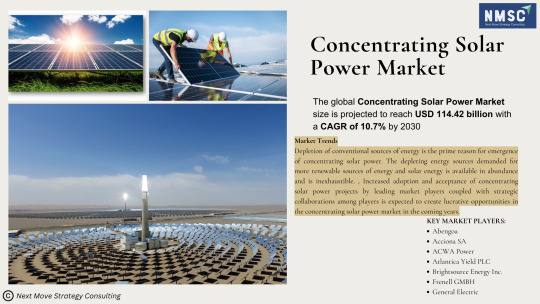
𝐀 𝐂𝐨𝐦𝐩𝐫𝐞𝐡𝐞𝐧𝐬𝐢𝐯𝐞 𝐑𝐞𝐩𝐨𝐫𝐭 𝐀𝐧𝐚𝐥𝐲𝐬𝐢𝐬 𝐨𝐧 𝐭𝐡𝐞 𝐂𝐨𝐧𝐜𝐞𝐧𝐭𝐫𝐚𝐭𝐢𝐧𝐠 𝐒𝐨𝐥𝐚𝐫 𝐏𝐨𝐰𝐞𝐫 𝐌𝐚𝐫𝐤𝐞𝐭
𝑮𝒆𝒕 𝒂 𝒇𝒓𝒆𝒆 𝒔𝒂𝒎𝒑𝒍𝒆 𝑷𝑫𝑭 𝒓𝒆𝒑𝒐𝒓𝒕 @ https://www.nextmsc.com/concentrating-solar-power-market/request-sample?utm_source=debashree_linkedin&utm_medium=debashree_sp&utm_campaign=debashree_concentrating_solar_power&utm_id=debashree_apr&utm_term=debashree_sp&utm_content=debashree_sp
As the world transitions towards cleaner and more sustainable energy solutions, 𝐂𝐨𝐧𝐜𝐞𝐧𝐭𝐫𝐚𝐭𝐢𝐧𝐠 𝐒𝐨𝐥𝐚𝐫 𝐏𝐨𝐰𝐞𝐫 (𝐂𝐒𝐏) emerges as a frontrunner in the renewable energy sector.
I'm thrilled to share that the 𝐂𝐒𝐏 𝐌𝐚𝐫𝐤𝐞𝐭 is experiencing remarkable growth, driven by advancements in technology, increasing environmental concerns, and supportive government policies worldwide.
𝑯𝒆𝒓𝒆 𝒂𝒓𝒆 𝒔𝒐𝒎𝒆 𝒌𝒆𝒚 𝒉𝒊𝒈𝒉𝒍𝒊𝒈𝒉𝒕𝒔 𝒔𝒉𝒂𝒑𝒊𝒏𝒈 𝒕𝒉𝒆 𝑪𝑺𝑷 𝒍𝒂𝒏𝒅𝒔𝒄𝒂𝒑𝒆:
𝐓𝐞𝐜𝐡𝐧𝐨𝐥𝐨𝐠𝐢𝐜𝐚𝐥 𝐈𝐧𝐧𝐨𝐯𝐚𝐭𝐢𝐨𝐧𝐬: From improved thermal storage systems to enhanced solar collectors, innovations are making CSP more efficient and cost-effective, bolstering its competitiveness in the energy market.
𝐂𝐨𝐬𝐭 𝐑𝐞𝐝𝐮𝐜𝐭𝐢𝐨𝐧𝐬: The continuous innovation and scaling of CSP technologies have led to significant cost reductions, making CSP projects more financially viable and attractive to investors.
𝐆𝐥𝐨𝐛𝐚𝐥 𝐄𝐱𝐩𝐚𝐧𝐬𝐢𝐨𝐧: CSP projects are proliferating globally, with significant installations in regions with abundant solar resources like the Middle East, North Africa, and parts of Asia, contributing to energy security and economic development.
𝐄𝐧𝐯𝐢𝐫𝐨𝐧𝐦𝐞𝐧𝐭𝐚𝐥 𝐁𝐞𝐧𝐞𝐟𝐢𝐭𝐬: CSP offers substantial environmental benefits, including reduced greenhouse gas emissions and water consumption compared to conventional fossil fuel-based power generation methods, aligning with sustainability goals.
As we witness the rapid growth and adoption of CSP technology, it's evident that it plays a crucial role in the global energy transition towards a more sustainable future.
𝐀𝐜𝐜𝐞𝐬𝐬 𝐟𝐮𝐥𝐥 𝐫𝐞𝐩𝐨𝐫𝐭 @ https://www.nextmsc.com/report/concentrating-solar-power-market
#ConcentratingSolarPowerMarket#ConcentratingSolarPowerIndustry#CSP#RenewableEnergy#Sustainability#CleanTech
0 notes
Video
youtube
DMRV Roundtable - Raviv Turner, MRV Collective
#youtube#DMRV#RoundtableDiscussion#RavivTurner#MRVCollective#RenewableEnergy#SustainableDevelopment#ClimateAction#CleanTech#GreenEconomy#EnergyTransition#Innovation#climatechange#carbon footprint
0 notes
Text
Revolutionizing Environmental Sustainability: The e-Waste Management Project by WasteMaterial
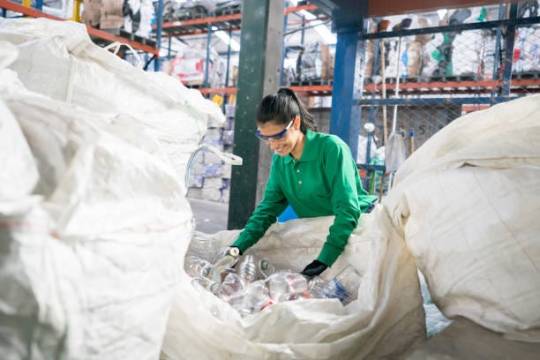
Understanding the E-Waste Predicament
The proliferation of electronic devices has resulted in a staggering amount of e-waste worldwide. From smartphones to laptops, these devices contain hazardous materials like lead, mercury, and cadmium, posing severe risks to human health and the environment if improperly disposed of. Unfortunately, traditional waste management systems often fall short in handling this specialized category of waste, leading to rampant pollution and resource depletion.
WasteMaterial: Leading the Charge for Change
Enter WasteMaterial, a visionary company dedicated to revolutionizing e-waste management. With a keen focus on sustainability and innovation, WasteMaterial has developed a comprehensive project aimed at mitigating the adverse effects of e-waste on our planet. Their holistic approach encompasses various facets of e-waste management, setting new standards for environmental responsibility and corporate citizenship.
Key Components of WasteMaterial’s E-Waste Management Project
Collection and Recycling: WasteMaterial operates a widespread network for the collection of e-waste, ensuring convenient disposal options for consumers and businesses alike. Through strategic partnerships with recycling facilities, they ensure that collected e-waste undergoes proper dismantling and recycling processes, minimizing the release of hazardous substances into the environment.
Resource Recovery: Recognizing the value of materials embedded in electronic devices, WasteMaterial emphasizes resource recovery as a cornerstone of their project. By employing advanced techniques such as material separation and extraction, they recover valuable metals and components from e-waste, reducing the need for virgin resources and promoting a circular economy.
Awareness and Education: WasteMaterial understands that sustainable change begins with education. As part of their project, they conduct extensive awareness campaigns and educational programs to enlighten communities about the importance of responsible e-waste management. By fostering a culture of environmental consciousness, they empower individuals to make informed choices and actively participate in waste reduction efforts.
Innovation and Research: With a commitment to continuous improvement, WasteMaterial invests in research and development to explore innovative solutions for e-waste management. From novel recycling technologies to eco-friendly product design, they strive to push the boundaries of sustainability and set new industry benchmarks.
Impact and Sustainability
The impact of WasteMaterial’s e-waste management project extends far beyond mere waste disposal. By diverting e-waste from landfills and incinerators, they prevent the release of harmful pollutants into the air, soil, and waterways, safeguarding ecosystems and public health. Moreover, their emphasis on resource recovery reduces the demand for raw materials, conserving natural resources and mitigating environmental degradation.
Join the Movement
As champions of environmental sustainability, WasteMaterial invites individuals, businesses, and policymakers to join their movement for responsible e-waste management. By supporting initiatives like theirs, we can collectively combat the e-waste crisis and pave the way for a greener, more sustainable future.
In conclusion, WasteMaterial’s e-waste management project stands as a testament to the power of innovation and commitment in addressing pressing environmental challenges. Through their pioneering efforts, they offer a glimmer of hope amidst the looming specter of e-waste, inspiring us to rethink our relationship with technology and the environment. Together, let us embrace the ethos of sustainability and propel towards a cleaner, healthier planet for generations to come.
#EcoFriendlyTech#GreenInnovation#SustainableLiving#CircularEconomy#ReduceReuseRecycle#DigitalResponsibility#TechRecycling#ConsciousConsumption#GreenTechnology#WasteFreeWorld#EnvironmentalStewardship#EcoConscious#ZeroWasteGoals#GreenFuture#SustainableSolutions#RenewableResources#PlanetFirst#EcoAwareness#ResponsibleConsumption#CleanTech#WasteReduction#EcoInnovation#SustainableBusiness#EarthFriendly#GreenRevolution#SustainableDevelopment#EcoFriendlyProducts#ClimateAction#GreenEfforts#WasteManagementHeroes
1 note
·
View note
Text
Empower Your Sales with TheLiveLead: Buy Solar Aged Leads to Boost Your Business

Why Choose TheLiveLead?
TheLiveLead stands out as a premier provider of Buy Solar Aged Leads for the solar industry. With years of experience and a proven track record, TheLiveLead understands the nuances of the solar market and the specific requirements of businesses operating within it. By leveraging advanced data analytics and industry expertise, TheLiveLead identifies and curates aged leads that are most likely to result in successful conversions.
What Sets TheLiveLead Apart?
Quality Assurance: Unlike traditional lead generation services that focus solely on quantity, TheLiveLead prioritizes quality. Each lead undergoes rigorous screening and verification processes to ensure its authenticity and relevance. This commitment to quality guarantees that businesses receive leads that have a genuine interest in solar products and services.
Customization: TheLiveLead recognizes that every business is unique, with its own set of goals and target demographics. As such, they offer customizable lead packages tailored to the specific needs of each client. Whether you’re targeting residential customers, commercial clients, or a niche market segment, TheLiveLead can provide Buy Solar Aged Leads that align with your objectives.
Cost-Effectiveness: Investing in Buy Solar Aged Leads from TheLiveLead offers significant cost savings compared to traditional lead generation methods. By tapping into a pool of pre-existing leads, businesses can minimize their acquisition costs while maximizing their ROI. This makes TheLiveLead an ideal solution for companies looking to optimize their marketing budget without compromising on lead quality.
Exclusivity: One of the key advantages of partnering with TheLiveLead is access to exclusive leads that are not available through other channels. By tapping into their extensive network and proprietary databases, TheLiveLead can provide clients with leads that are not oversaturated or exhausted. This exclusivity gives businesses a competitive edge in a crowded market landscape.
Expert Support: Beyond just providing leads, TheLiveLead offers ongoing support and guidance to help businesses maximize their conversion rates. Their team of seasoned professionals is dedicated to assisting clients at every stage of the sales process, from lead acquisition to closing deals. Whether you need advice on lead nurturing strategies or insights into market trends, TheLiveLead is there to lend a helping hand.
Buying Solar Aged Leads: A Smart Investment
In today’s fast-paced business environment, time is of the essence. Waiting for fresh leads to trickle in can be both time-consuming and inefficient. By purchasing Buy Solar Aged Leads from TheLiveLead, businesses can bypass the waiting game and jumpstart their sales efforts immediately. These aged leads have already expressed interest in solar products or services, making them highly receptive to marketing messages and more likely to convert into paying customers.
Moreover, Buy Solar Aged Leads offer a unique advantage in that they have already been exposed to the concept of solar energy. This eliminates the need for extensive education or persuasion, allowing businesses to focus their efforts on closing deals rather than generating initial interest. With TheLiveLead’s aged leads, businesses can accelerate their sales cycle and achieve faster revenue growth.
Conclusion
In the competitive landscape of solar energy sales, access to high-quality leads can make all the difference. By partnering with TheLiveLead and investing in aged leads, businesses can gain a competitive edge, streamline their sales process, and achieve greater success. With a commitment to quality, customization, and cost-effectiveness, TheLiveLead empowers businesses to reach their sales targets and unlock new opportunities for growth. Don’t wait for leads to come to you — take control of your sales pipeline with TheLiveLead’s Buy Solar Aged Leads today.
#SolarEnergySales#RenewableEnergyLeads#LeadConversion#BusinessGrowth#SalesAcceleration#SolarPowerProspects#MarketingStrategy#CustomerAcquisition#B2BSales#TargetedLeads#ROI#SalesPipeline#ConversionRateOptimization#SustainableBusiness#GreenEnergy#CleanTech#MarketInsights#IndustryExpertise#SalesSupport#LeadNurturing#InboundMarketing#CustomerRetention#SustainableFuture#EcoFriendly#RenewableResources#SolarPanelInstallation#SmartInvestment#BusinessSuccess#SalesPerformance#RevenueGrowth
1 note
·
View note
Text
Weekly output: online advertising and privacy, net neutrality vote, vineyard robotics, Meta content moderation run amok, manufacturing gone green
I’m heading to Dulles before dawn tomorrow, but not for work: I’m flying to Dallas to try to see the solar eclipse, a friend having invited people to visit for the occasion. Please wish us luck with the weather!
4/3/2024: Ad Industry Unbothered by Federal Privacy Law (Because It’ll Probably Never Happen), PCMag
I wrote this from the Interactive Advertising Bureau’s Public Policy and Legal Summit…

View On WordPress
#circular economy#cleantech#Facebook blocking links#Facebook content moderation#FCC#greentech#IAB#IAPP#Kansas Reflector#net neutrality#online privacy#privacy law#sustainability
0 notes
Text
Opinion: What Canada can learn from Britain, where there’s boom amid the gloom
Open this photo in gallery:
Piper Norman Fiddes attends the opening of The European Offshore Wind Deployment Centre located in Aberdeen Bay on Sept. 7, 2018 in Aberdeen, Scotland.Jeff J Mitchell/Getty Images
John Rapley is an author and academic who divides his time among London, Johannesburg and Ottawa. His books include Why Empires Fall (Yale University Press, 2023) and Twilight of the Money…
View On WordPress
#BRITAIN#Canada#cleantech#country#economy#Energy#INVESTMENT#KPMG#north sea#United States#Yale University Press
0 notes
Text

Renewable Energy Solutions | Juniper Green Energy
Juniper Green Energy provides innovative renewable energy solutions, focusing on sustainability and efficiency. Our tailored approach ensures that each project meets the unique needs of our clients. From solar and wind power to energy storage solutions, we deliver cost-effective and environmentally friendly options for a greener future. https://www.junipergreenenergy.com/sustainability
twitter:: https://twitter.com/JuniperGE
Instagram https://www.instagram.com/junipergreenenergy/
linkedin: https://www.linkedin.com/company/junipergreenenergy/?viewAsMember=true
0 notes
Text
Interested in how the atoms in the tellurite glass would reorganize when exposed to fast pulses of high energy femtosecond laser light, the scientists stumbled upon the formation of nanoscale tellurium and tellurium oxide crystals, both semiconducting materials etched into the glass, precisely where the glass had been exposed. That was the eureka moment for the scientists, since a semiconducting material exposed to daylight may lead to the generation of electricity.
#nanotechnology#materialsscience#semiconductor#energy#engineering#innovation#researchanddevelopment#cleantech
6 notes
·
View notes
Text
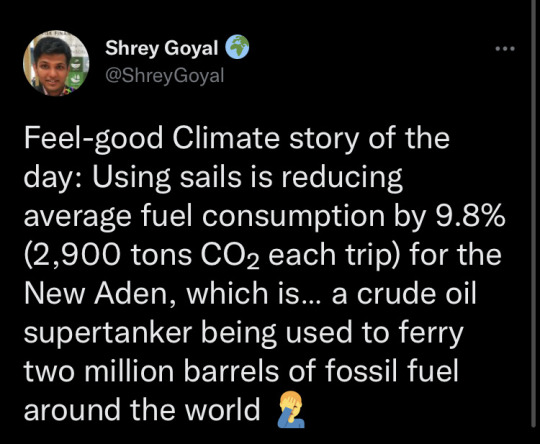
View on Twitter
(Source)
#Climate Change#Late Stage Capitalism#greenwashing#cleantech#end fossil fuels#Climate Crisis#My Tweets
13 notes
·
View notes
Text



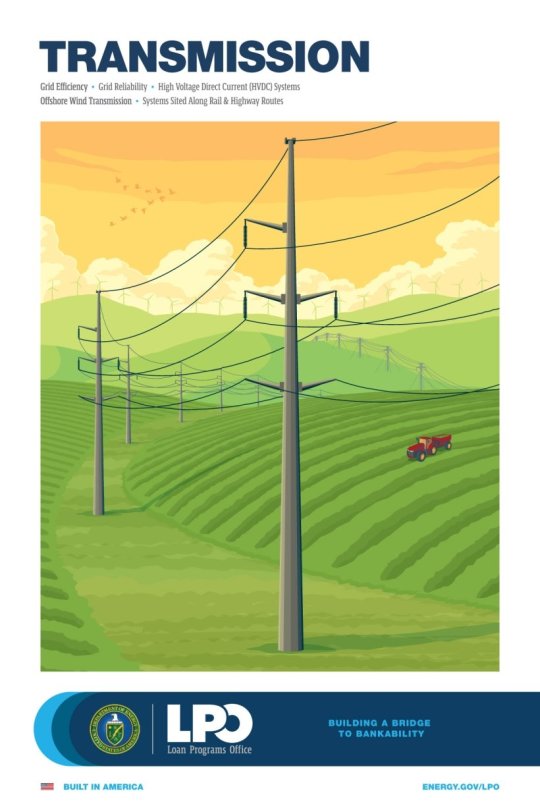
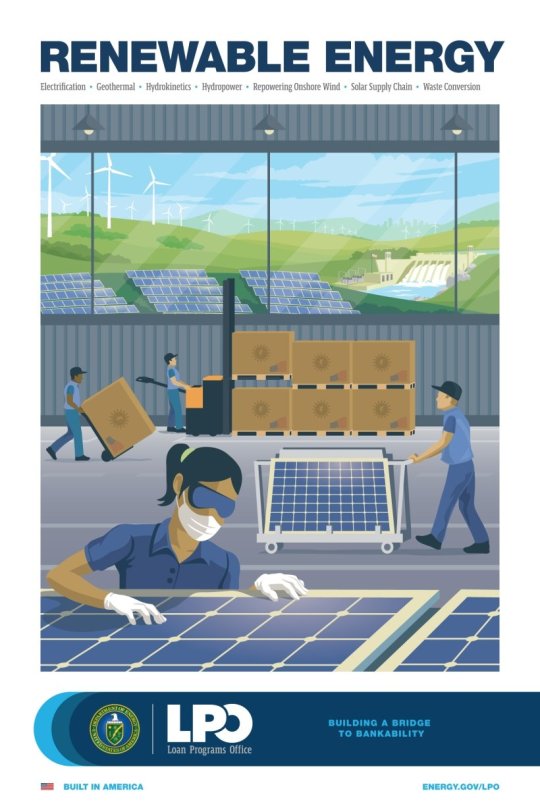
No thoughts just the DOE LPO cleantech posters
#clean energy transition#cleantech#doe#lpo#department of energy#loans program office#renewable energy#renewable energy art
0 notes
Text

Green Hydrogen Future
"Green Hydrogen Future" describes how green hydrogen is expected to develop and play a part in the world's energy system going forward. It includes projections, patterns, and future advances concerning the creation, application, and transfer of green hydrogen. Reducing carbon emissions, attaining sustainability, and switching to a greener, more sustainable energy system are all directly related to the idea.
Download- https://www.marketsandmarkets.com/pdfdownloadNew.asp?id=92444177
A "green hydrogen future" is a potential state of affairs in which hydrogen produced by electrolysis fueled by renewable energy sources plays a major role in fostering a low-carbon and sustainable economy. In this futuristic vision, the decarbonization of several industries, including transportation, manufacturing, and energy production, is largely dependent on green hydrogen. It signifies a move away from greenhouse gas-emitting fossil fuel-based hydrogen generation techniques and toward a greener, more sustainable substitute. To fully realize the potential of hydrogen as a flexible and carbon-neutral energy carrier, developments in electrolysis technology, infrastructure development for hydrogen, supportive policies, and enhanced stakeholder collaboration are all necessary components of the green hydrogen future.
The "Green Hydrogen Future" is a comprehensive plan for moving toward a sustainable and eco-friendly hydrogen-based economy. The following are some salient features and ramifications of this vision:
Renewable Energy Integration: With the use of electrolysis and sustainable energy sources like solar, wind, or hydroelectric power, green hydrogen is created. By resolving the issue of intermittency and easing the transition to a more dependable and sustainable energy system, this integration makes it possible to store and use excess renewable energy.
Decarbonization: The urgent need to decarbonize the transportation, industrial, and heating sectors of the economy is one of the main forces behind the green hydrogen future. Greenhouse gas emissions can be greatly decreased by switching to green hydrogen from fossil fuels, aiding in the worldwide effort to slow down climate change and reach net-zero carbon emissions.
Energy Storage and Grid Stability: Green hydrogen has the potential to be a flexible energy carrier and storage medium that can help the electrical grid balance supply and demand. When demand is low, excess renewable energy can be used to make hydrogen, which can then be used directly in fuel cells or converted back into electricity when demand is high. This flexibility improves the stability and dependability of the grid, especially as renewable energy sources proliferate.
Industrial Applications: There are several industrial uses for green hydrogen, such as chemical synthesis, steel production, and ammonia generation. These sectors can drastically lower their carbon footprint and environmental impact by switching to green hydrogen instead of fossil fuels or hydrogen made from natural gas (often referred to as "grey hydrogen").
Transportation: Green hydrogen is an environmentally friendly fuel that can be used for buses, trucks, trains, and fuel cell vehicles (FCVs). While conventional vehicles release pollutants from their internal combustion engines, FCVs produce no emissions at all; the only byproduct of hydrogen combustion is water vapor.
Global Energy Transition: Global energy transition might be accelerated by the green hydrogen future, which would offer clean and sustainable energy to all nations. Realizing this ambition and tackling the common challenge of climate change on a global scale depend on building a strong green hydrogen infrastructure and encouraging international cooperation.
Ultimately, the green hydrogen future offers a way forward for a more resilient and sustainable energy system that puts social welfare and environmental preservation first. It signifies a paradigm shift in the production, storage, and use of energy. However, in order to overcome technological, financial, and legal obstacles and hasten the shift to a hydrogen-based economy, governments, businesses, and society at large will need to work together in order to realize this goal.
Read More-https://www.marketsandmarkets.com/industry-practice/hydrogen/green-hydrogen
#GreenHydrogen#RenewableEnergy#CleanEnergy#HydrogenEconomy#SustainableFuture#ZeroEmissions#HydrogenTechnology#ClimateAction#EnergyTransition#HydrogenPower#CleanTech#FuelCells#Decarbonization#RenewableHydrogen#FutureFuel#GreenTech#HydrogenSociety#EcoFriendly#EnergyInnovation#CarbonNeutral
0 notes
Text
Empower your home with solar brilliance from SWT Energy! Light up your space sustainably with our expert solutions. Contact us now at 📞 +1(800)511-2322 or visit 🌐 www.swtus.com.

#SWTEnergy#SolarPower#RenewableFuture#SolarEnergy#CleanEnergy#RenewablePower#GreenTech#SustainableLiving#EcoFriendly#ClimateAction#GoGreen#EnergySavings#SolarPanelInstallation#GreenLiving#CleanTech#SolarPanel#SolarInstallation#GreenEnergySolutions
0 notes